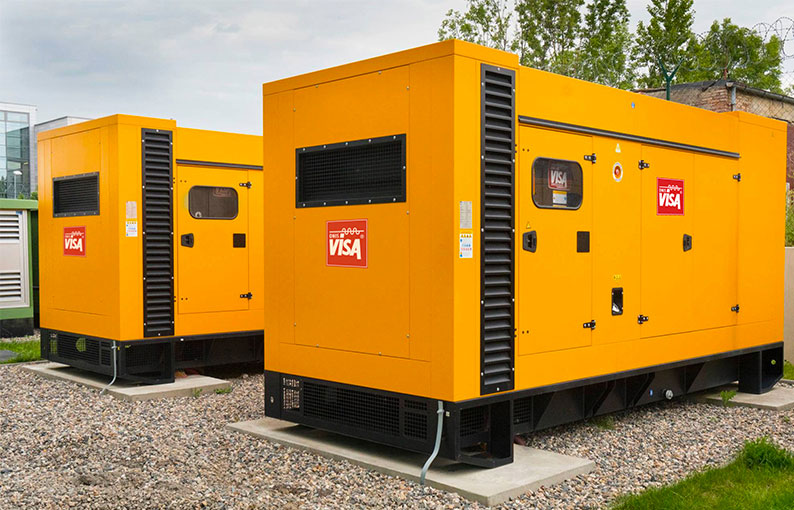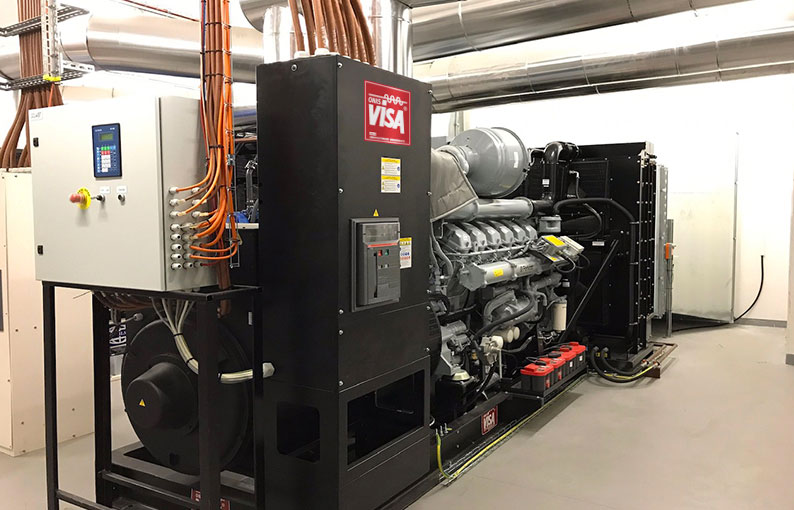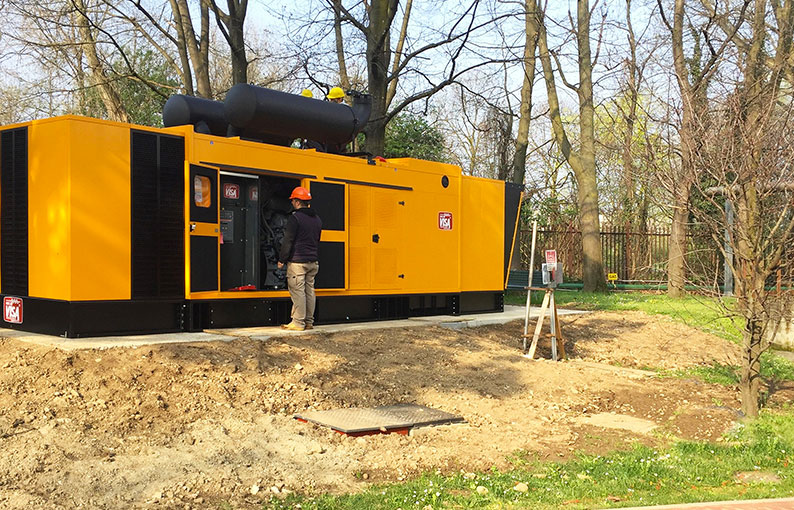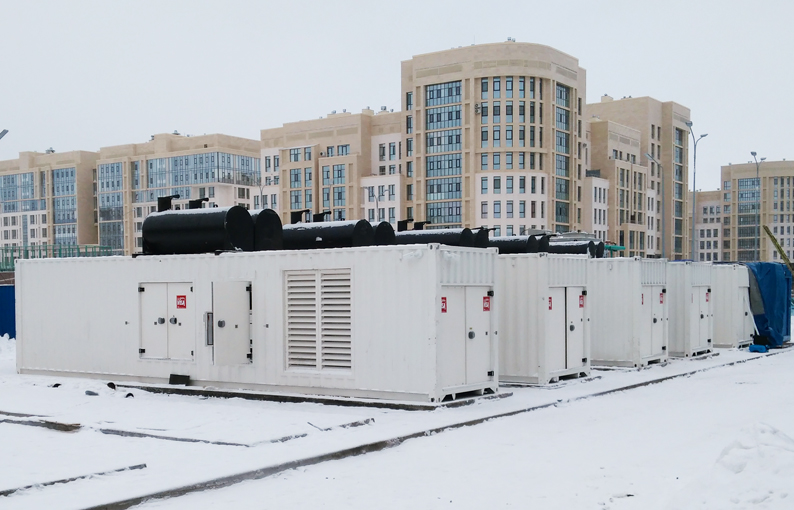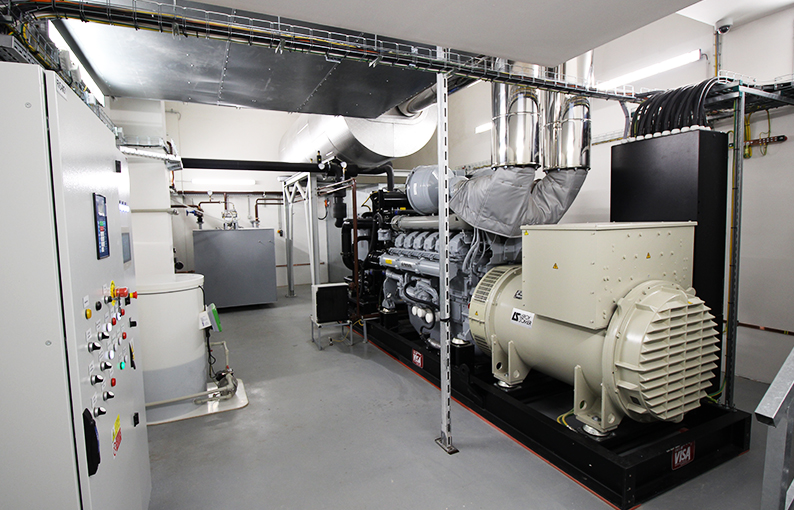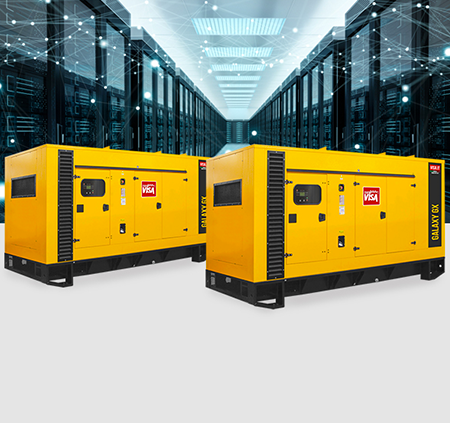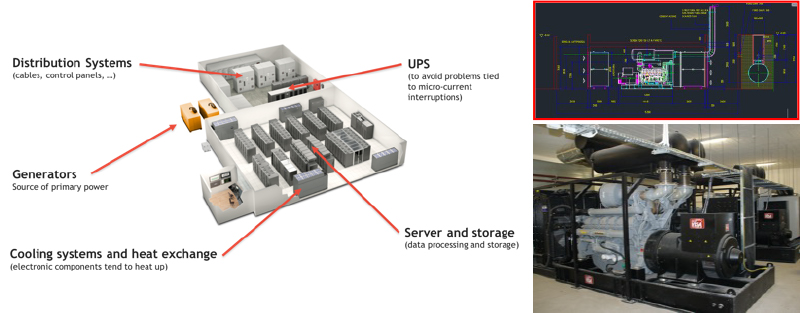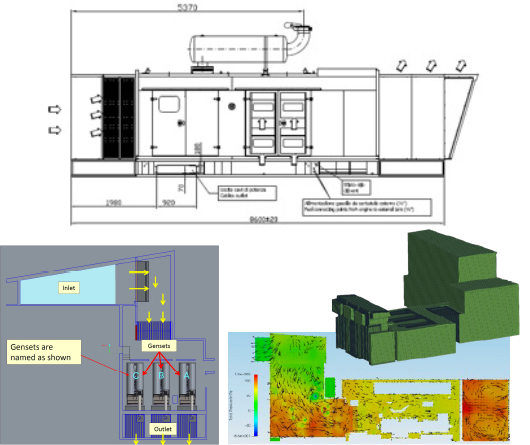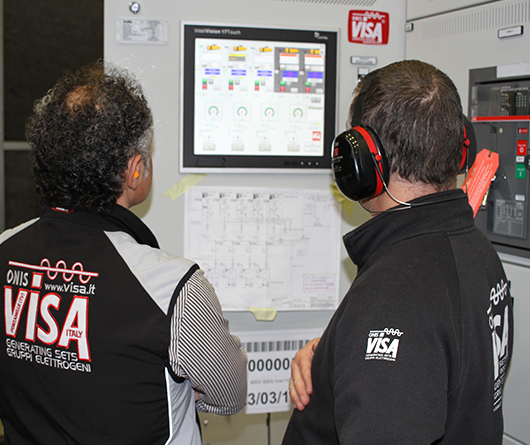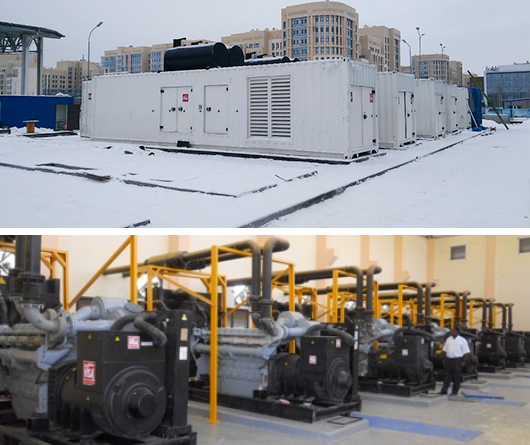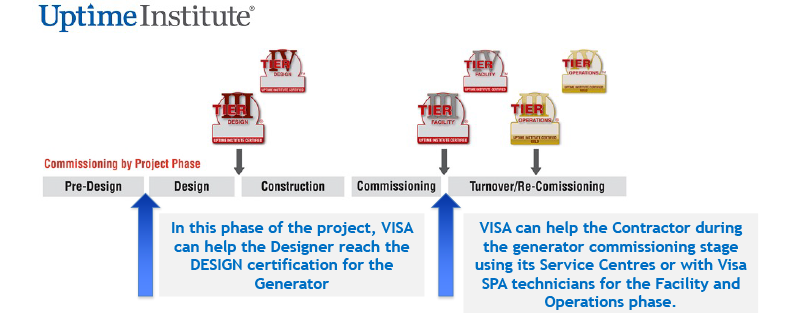DATA CENTER BACKUP SOLUTIONS
The Data Center application is experiencing an increasing demand in the genset industry.
Generating sets are designed to meet the need of hihg-level reliability and availability for Data Center applications.
KEY POINTS:
- GENERATOR SIZING SUPPORT: VISA SUPPLIES DCC RATING SOLUTIONS GUARANTEED BY ENGINE MANUFACTURERS
- DESIGN PHASE
- CONTROL AND COMMUNICATION SYSTEMS FOR ANY LEVEL OF REDUNDANCY REQUIRED
- ADDITIONAL REFUELING TRANSFER AND FILTRATION SYSTEM
For any Data Center projects, we support and assistance along to ensure that data centre managers can maintain their critical power requirements, with genset systems that deliver the best available technology with massive kWs and a support network offering industry-leading expertise.
The Visa SpA technical and Sales team supports consultants and engineers to design with the confidence that Onis Visa generating sets can be applied up to the specified rating without restrictions on varying or non-varying loads or hours of operation.
How does one go about buying backup generators for a Data Center?
The first step is determining the power-distribution infrastructure that will meet the data center's needs. To accomplish that, it is recommended to:
- Understand the raised-floor area, heat load and square area or number of racks to be used as that will help estimate the facility's total power consumption. The result indicates the approximate size of the required power system.
- Define how power arrives to the critical loads.
- Implement standard power-distribution system architecture, especially when paralleling multiple generators because this will increase reliability and facilitate serviceability.
What to look for in a backup generator
- Power distribution: Tier rating and power requirements will determine the controls on the generator sets. Redundancy and reliability are critical to the control systems that switch generators online or control several generator sets running in parallel.
- Remote monitoring and control: controllers allow remote monitoring and control capabilities. Data Center operators can view engine and alternator data, control system status, power-transfer status, power-transfer connection status and load levels.
Generator Sizing support
This is the most important point for a good result. Already in the planning stages, Visa can support the client in sizing the generator based on the loads and redundancy system required. Data Centers have particular loads that may require units be supplied with DCC rating, which Visa is able to do.
The engines are specifically designed for Data Centers and sized in accordance with DCC (Data Centre Continuous Ratings) that comply with the Uptime Institute regulations.
DESIGN PHASE
- Design support with drawings and technical documentation
- Support in creating the correct installation area
- Tailor made genset configuration with all the necessary equipment
- Test and certification of the entire Power System within our test facilities.
CONTROL AND COMMUNICATION SYSTEMS
- Ability to integrate paralleling control system to guarantee any level of redundancy required by the different Tier certifications
- The controllers can include different communication protocols in order to integrate the generator set, its operating parameters and alarms into the building’s management system (BMS). These can also be remotely monitored and controlled allowing operators to have visibility to power system performance from a Web browser.
ADDITIONAL REFUELING TRANSFER AND FILTRATION SYSTEM
- Able to monitor and control external refueling systems to guarantee a reliable, and where necessary, redundant, fuel feed.
- Filtering fuel to ensure optimal quality for genset operation.
Data Centers require large amounts of backup power due to load size; this is best served by creating a power redundancy using multiple generators to secure constant uptime in power. Duplicating power generation for critical systems translates into reliability and assurance of uptime.
It is important to create this redundancy in backup power generation. Given the critical information contained in a Data Center, having a single backup generator, while reliable, is still too great a risk should a disaster occur. A redundancy of multiple generators to handle the load when primary power is unavailable is the most secure way to ensure vital power generation and mitigate risks associated with power loss.
